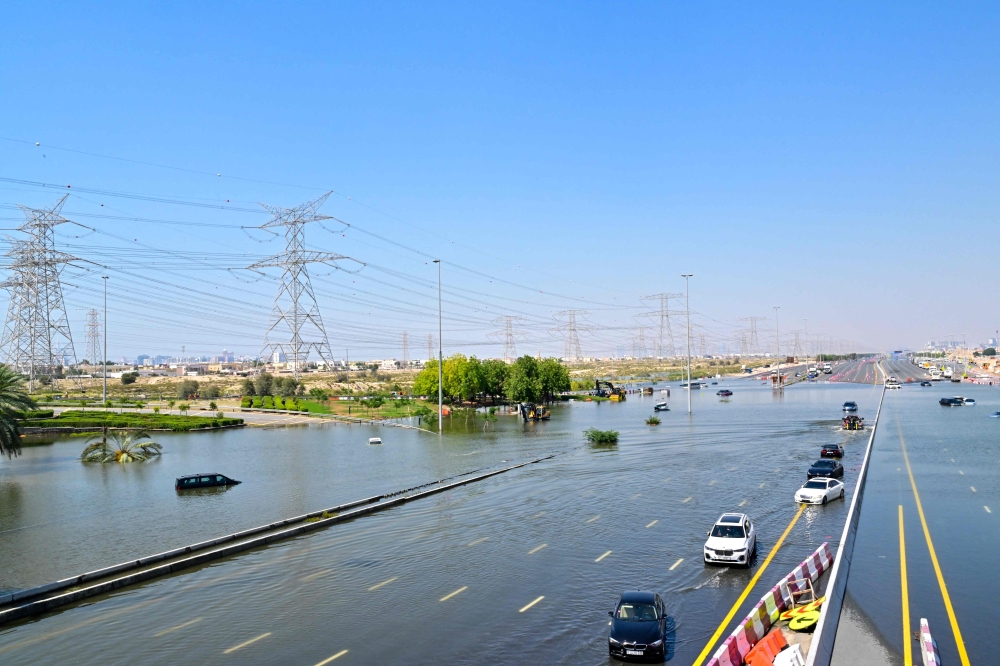Heavy rains in Dubai have caused chaos for the third consecutive day, disrupting operations at the city’s airport and stranding thousands of passengers. The record-breaking rains have flooded the runways and highways, leading to the cancellation of over 1,200 flights and the diversion of 41 others. Traffic congestion remains severe, with major highways blocked by water and many junctions impassable due to flooding. The chaos has left many travellers stranded at the airport, with some forced to sleep there due to the flooded roads preventing them from leaving.
Emirates, Dubai’s state-owned flagship airline, and its sister carrier flydubai have resumed check-ins after advising passengers to avoid the airport the previous day. However, the airport continues to face delays and cancellations, with nearly 200 departures affected on Thursday. The influx of passengers at Terminal 3 has led to overcrowding and chaos, with many travellers struggling to get information about their flights. The airport has been operating with limited staff, further complicating the situation for stranded passengers.
Despite efforts to restore operations, delays and cancellations are expected to continue, leaving many passengers frustrated and unsure about the status of their flights. The situation has caused stress and confusion for travellers, including one elderly couple whose 14-hour flight turned into a 24-hour ordeal due to diversions and flooding. The couple, unable to reach their hotel, expressed their frustration and uncertainty about how to proceed with their holiday plans.
The flooding in Dubai has highlighted the vulnerability of the city’s infrastructure to extreme weather events, raising concerns about preparedness and resilience. The airport, which handles a significant amount of international traffic, has struggled to cope with the aftermath of the heavy rains, leading to widespread disruptions and chaos. The city’s transportation network has also been heavily impacted, with flooded roads and disrupted public transport adding to the challenges faced by stranded passengers.
The situation in Dubai serves as a reminder of the importance of disaster preparedness and infrastructure maintenance in the face of increasing climate-related risks. As extreme weather events become more frequent and severe, cities and transportation hubs must invest in resilience measures to minimize the impact on services and ensure the safety and well-being of residents and travellers. The chaos at Dubai airport underscores the need for comprehensive emergency response plans and adequate staffing to handle crises effectively.
In the aftermath of the heavy rains, Dubai authorities are likely to conduct a review of their response and preparedness measures to address the shortcomings that contributed to the chaos at the airport and surrounding areas. Lessons learned from this experience will inform future planning and investment in infrastructure and emergency response capabilities to better mitigate the impact of extreme weather events. As the city continues to grow and develop, ensuring the resilience of critical infrastructure will be vital to safeguarding the well-being and mobility of residents and visitors.











